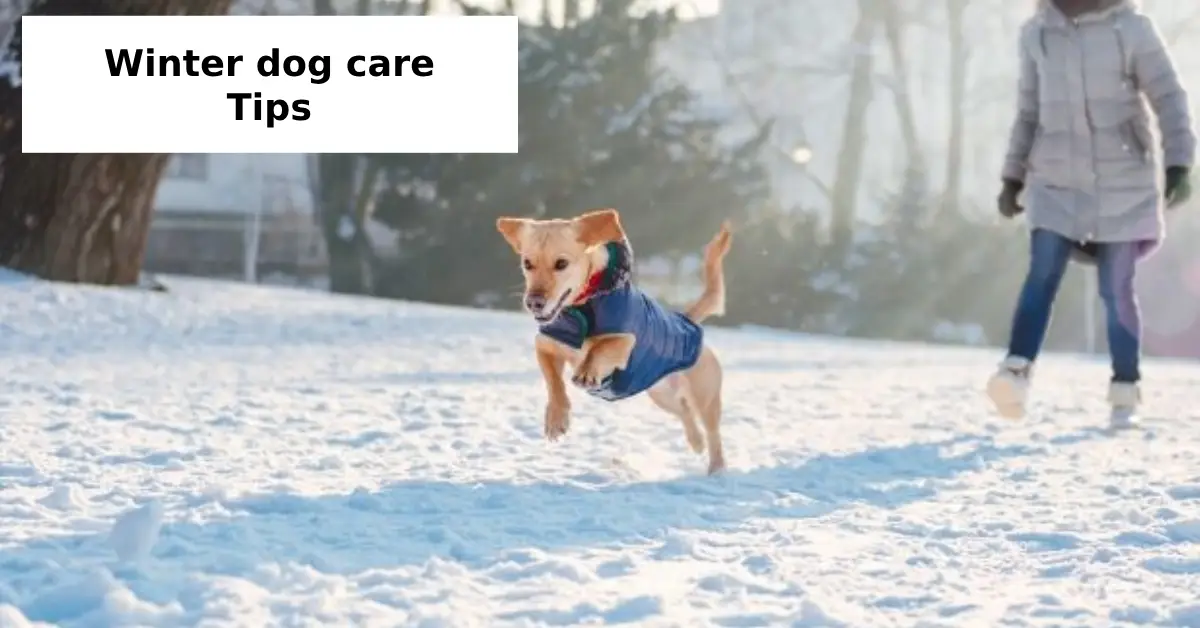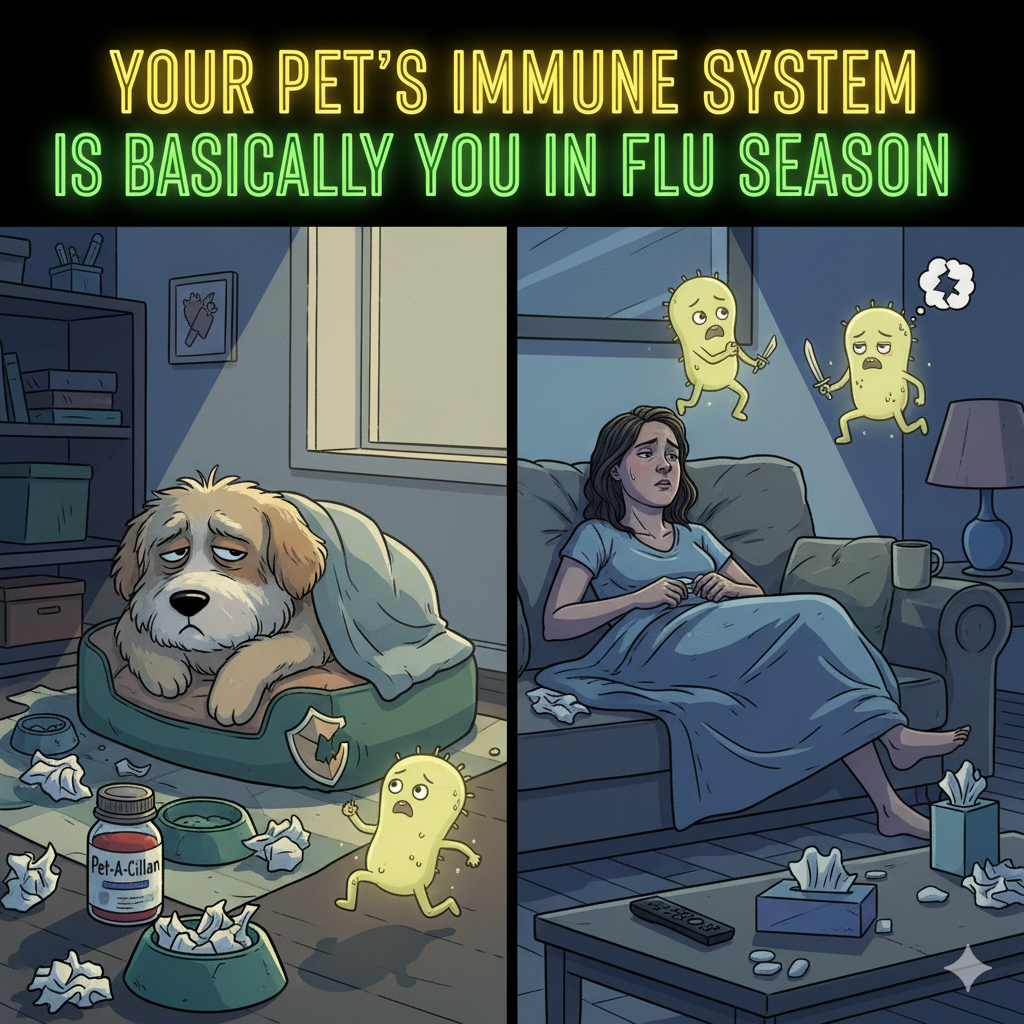When the temperatures dip and snow begins to fall, dog owners across the country—especially in colder climates—face new challenges. Just like humans, dogs need extra care during winter to stay healthy and comfortable. From keeping them warm on walks to protecting their paws from salt and frostbite, Winter Dog Care is essential for every responsible pet parent. Whether you’re a first-time dog owner, living in an icy city, or caring for a senior pup, these expert tips will help you navigate the chilly season with confidence.
Why Winter Dog Care Matters
Winter can pose several risks to dogs, especially those living in cold regions. Hypothermia in dogs during winter is a real concern, as are frostbite, paw pad injuries, and reduced immunity. Puppies, small breeds, and senior dogs are especially vulnerable.
Cold weather safety tips for dogs aren’t just about staying warm—they’re about preventing illness, injury, and seasonal stress. Good Winter Dog Care improves your pet’s comfort and ensures they remain active, healthy, and happy all season long.
How to Keep Dog Warm in Winter
1. Invest in a Proper Winter Coat for Dogs
Not all dogs are naturally equipped for winter. Short-haired breeds and smaller pups need insulation when heading outdoors. A high-quality winter coat for dogs provides warmth while still allowing movement. Look for waterproof materials with adjustable straps.
2. Limit Time Outdoors
Wondering how cold is too cold for dogs? As a rule of thumb, if it’s too cold for you, it’s likely too cold for your dog. When temperatures fall below 20°F (-6°C), limit outdoor walks and bathroom breaks to 10–15 minutes, unless your dog is a cold-weather breed like a Husky.
3. Keep Your Home Cozy
Ensure your home remains a comfortable retreat. Place dog beds away from drafts and provide warm blankets. Senior dogs, in particular, benefit from orthopedic heated beds, especially in tile-floored homes.
Protecting Paws: Dog Paw Protection in Snow
1. Use Dog Boots
One of the best winter dog care tips is to use the best dog boots for snow. These prevent ice buildup between toes and protect against salt and chemicals used on sidewalks. Urban dog owners especially benefit from boots, as city streets can be harsh in winter.
2. Clean and Inspect Paws After Walks
Always wipe your dog’s paws with a damp cloth to remove ice, salt, and de-icing chemicals. Look for cracks or redness and apply paw balm or petroleum jelly for added protection.
3. Consider Pet-Safe Ice Melt for Driveways
Standard rock salt can be toxic. Choose pet-safe ice melt for driveways to avoid harmful exposure to your dog’s paws and skin.
Cold Weather Safety Tips for Dogs Indoors and Outdoors
1. Maintain a Healthy Diet and Hydration
Dogs may burn more calories in winter to stay warm. Consult your vet about slightly increasing food portions and ensure fresh water is always available. Avoid metal bowls outdoors—they can freeze and cause injury.
2. Don’t Shave Their Fur
Even if your dog usually gets trimmed, let their coat grow longer during winter. Fur is their natural insulation. Keep grooming consistent to prevent matting, which reduces warmth.
3. Beware of Hypothermia in Dogs During Winter
Symptoms include shivering, lethargy, and cold ears or paws. If your dog shows these signs, get them warm immediately and consult your vet. Hypothermia in dogs winter cases can escalate quickly and require immediate attention.
Fun and Safe Indoor Activities for Dogs in Winter
Cold weather doesn’t mean boredom! Keep your pup stimulated with indoor activities for dogs in winter such as:
- Puzzle feeders or treat-dispensing toys
- Tug-of-war with soft ropes
- Hide-and-seek games
- Indoor agility training with household items
These activities are perfect for Dog Owners in Cold Climates and Urban Dog Owners with limited outdoor space.
Essential Winter Dog Gear Checklist
Make sure you’re equipped with winter dog essentials:
- Winter coat for dogs (insulated, waterproof)
- Dog boots (anti-slip, adjustable)
- Paw balm or wax
- Reflective leash or jacket for early dark evenings
- Heated dog bed or warm blankets
- Extra towels for drying off after walks
- Pet-safe ice melt for driveways
Bonus Tips for Specific Dog Owner Types
Pet Parents Who Treat Dogs Like Family
Invest in premium, cozy dog beds and winter accessories. Share snuggles under blankets and watch holiday movies together!
First-Time Dog Owners
Start by understanding how dogs react to cold. Invest in the basics: winter coat, boots, and a good paw-cleaning routine.
Senior Dog Owners
Older dogs may have arthritis or joint stiffness worsened by cold. Talk to your vet about joint supplements and warm bedding options.
Veterinary and Pet Retail Readers
Share these tips in newsletters or blogs. Help your clients make informed decisions on Winter Dog Care products and services.
Outdoor Walk Etiquette and Safety
While fewer dogs might be out during winter, it’s still vital to follow good behavior rules. Read our dog park etiquette guide to ensure safe socializing even in snowy parks. Always supervise interactions and avoid icy areas where slips are likely.
Watch Out for These Winter Hazards
1. Antifreeze Poisoning
Keep all antifreeze products out of reach. Even small amounts can be fatal.
2. Hidden Sharp Objects
Snow can cover glass, sticks, and other sharp items. Stay on well-trodden paths and watch where your dog steps.
3. Slipping on Ice
Older or small dogs may easily slip. Stick to areas with grip or invest in booties with rubber soles.
When to Call the Vet in Winter
Call your vet if you notice:
- Limping after walks
- Excessive licking of paws
- Shivering or lethargy indoors
- Changes in appetite or bathroom habits
- Dry or cracked nose and paw pads
Regular winter checkups are recommended for Senior Dog Owners or dogs with underlying health issues.
Conclusion: Keep Your Dog Safe and Warm This Winter
Winter Dog Care is all about proactive preparation. With a bit of planning and the right gear, you and your pup can enjoy the season safely. Whether you’re a First-Time Dog Owner or a Veterinary Professional, staying informed ensures your furry companion thrives even when temperatures drop.
Embrace the cold with love, warmth, and lots of cozy cuddles—your dog will thank you with tail wags and winter-ready energy!
Quick Recap Checklist for Winter Dog Care:
- Limit exposure in freezing weather
- Use a warm, waterproof winter coat
- Protect paws with boots or balm
- Watch for signs of hypothermia
- Provide enriching indoor activities
- Use pet-safe ice melt
- Maintain good nutrition and hydration
- Schedule seasonal vet visits





